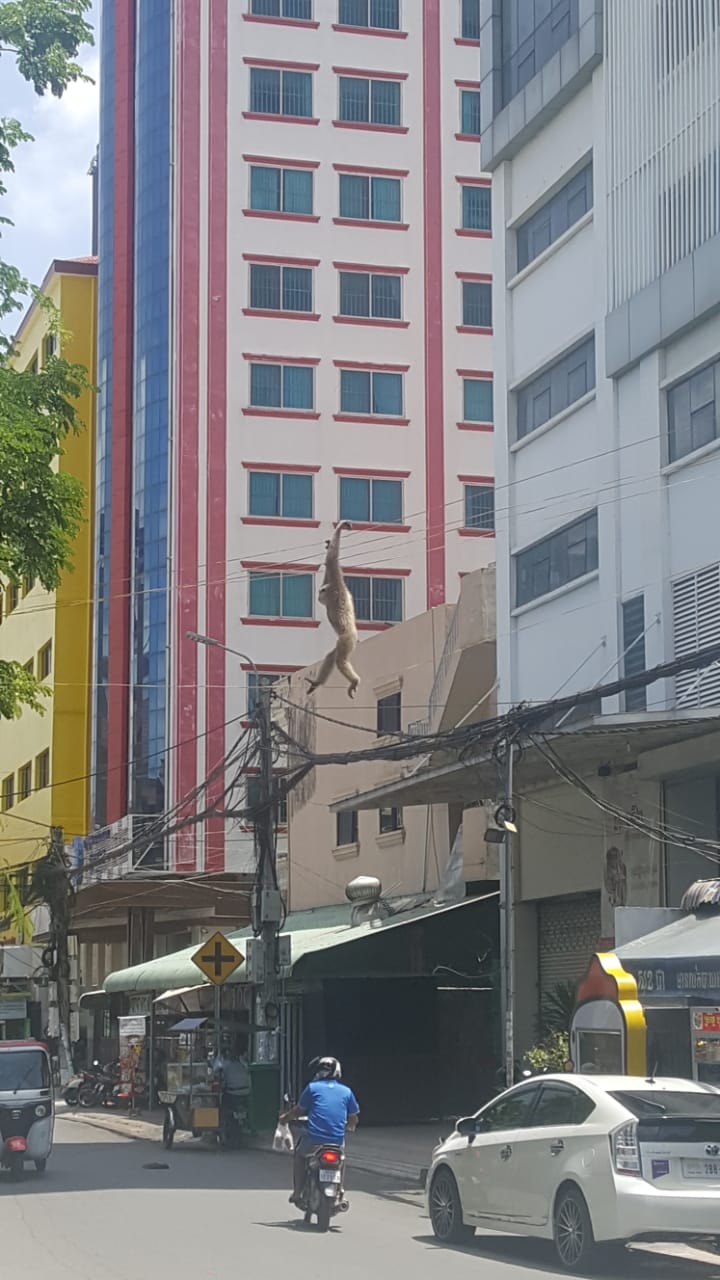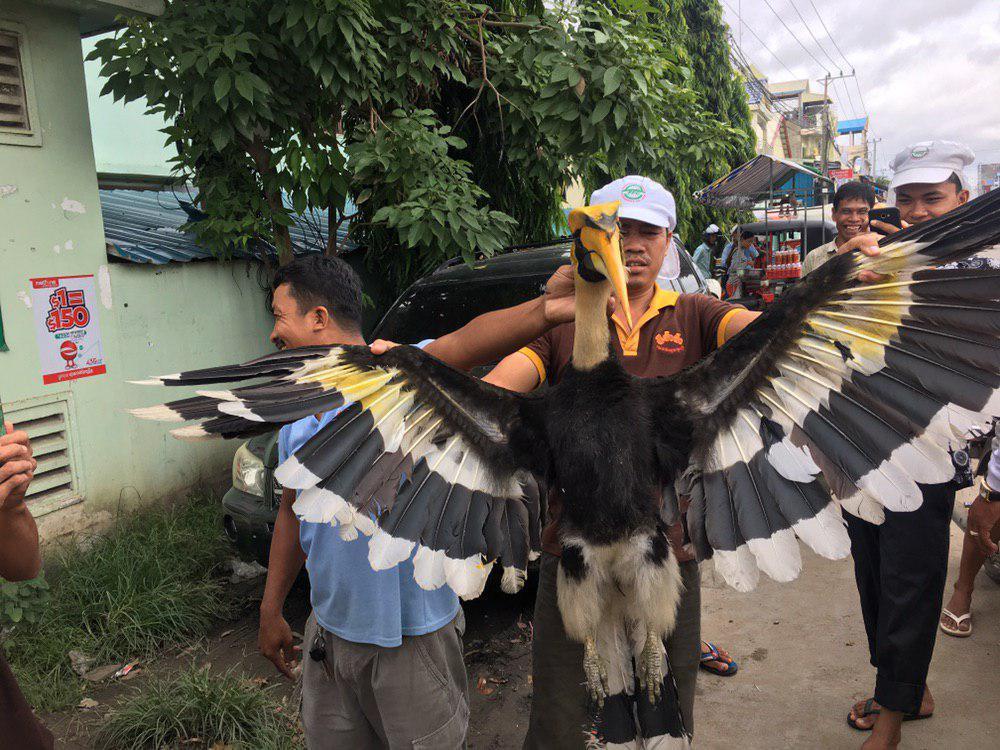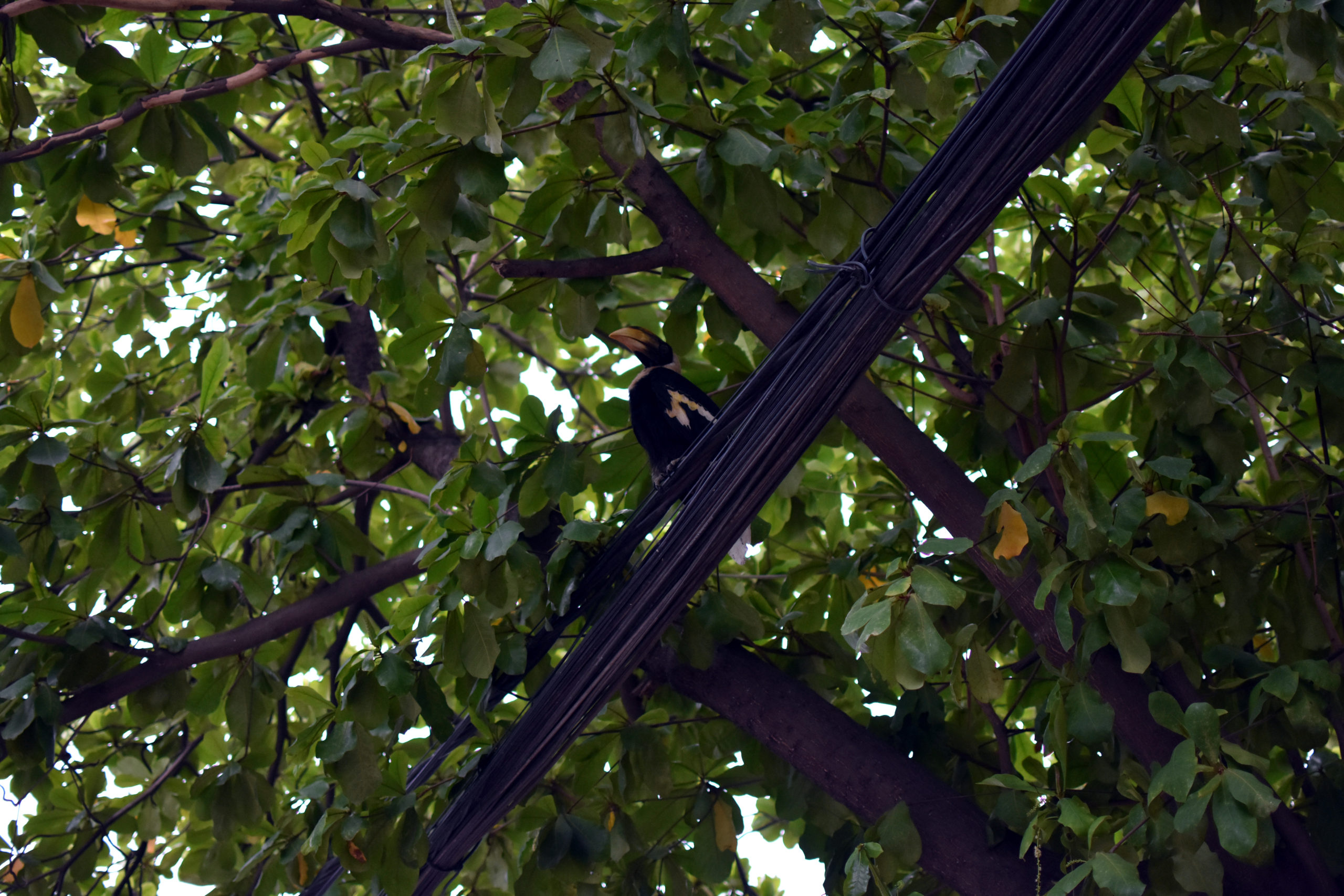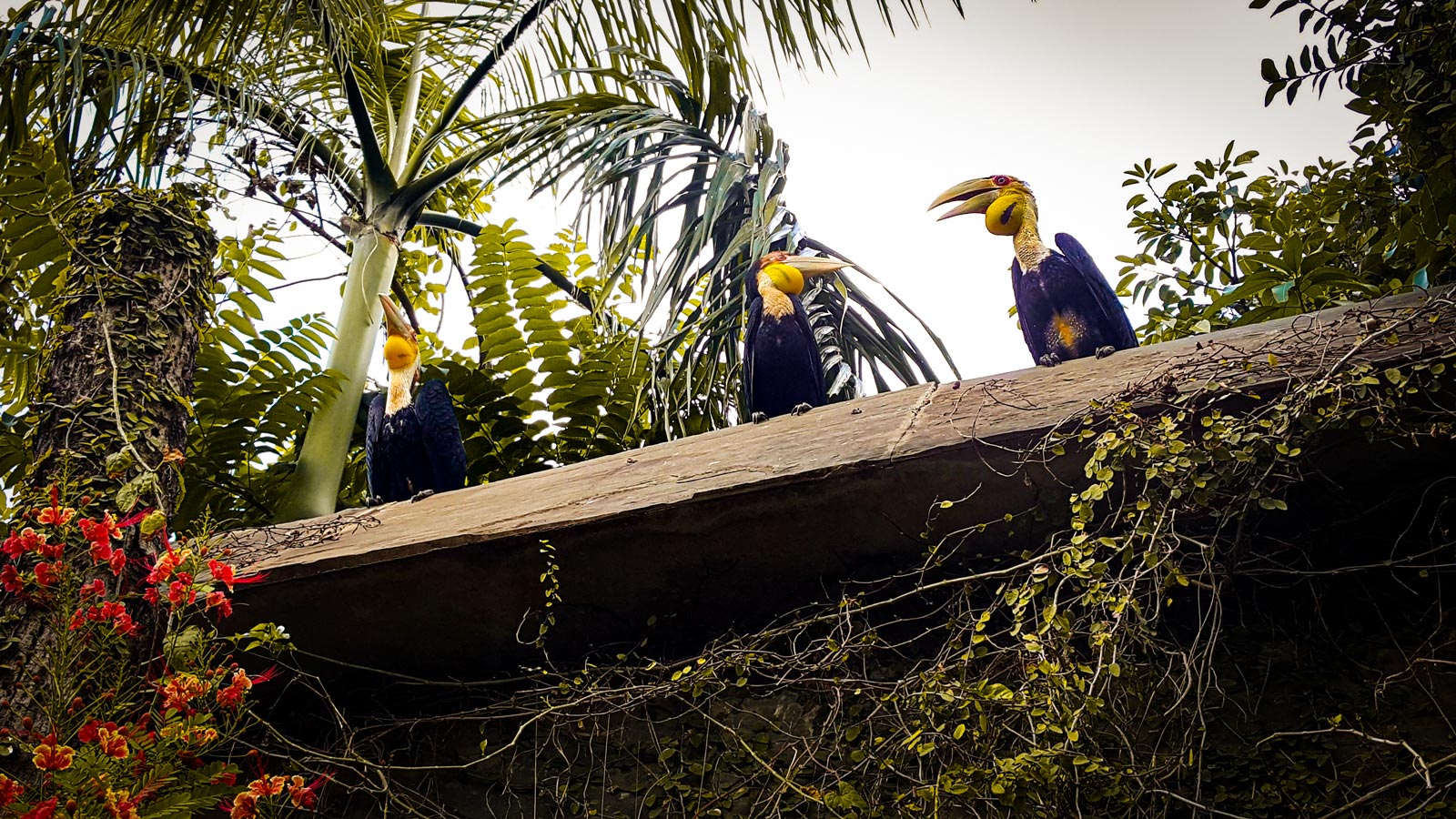Roving journalist Mech Dara contributed to this report. Andrew Haffner posts regularly about his encounters with the exotic roaming animals of Phnom Penh on his Twitter account.
Travellers in Cambodia may spend hundreds of dollars to venture deep into its forests for just a brief glimpse of a gibbon flying hand-over-hand through the canopy.
These would-be primatologists don’t need to go on safari to see the endangered apes though, at least not in the Toul Tompoung area of the Cambodian capital Phnom Penh. That’s because a pair of gibbons frequents the neighbourhoods around busy Mao Tse Toung Road, moving above the streets of the urban jungle along a network of power lines, balconies and the odd tree.
The pair, one black in color, the other a mottled grey, are pileated gibbons. Their natural habitat is in the thick forests of the country’s rural hinterlands, such as in the northern plains of Preah Vihear and in the Cardamom Mountains in the nation’s south, where their numbers have dwindled due to poaching and habitat loss. Conservationists estimate there are 48,000 of these specific gibbons left in the wilds of Southeast Asia, which are home to roughly 20 different species of the acrobatic, long-armed ape.

But these two urban gibbons live in the city under circumstances both unusual and all too common.
“These two belong to an untouchable oknha [a civilian title reserved for large donors to the government] and are semi-pets, so reporting them will do nothing,” a local conservation worker told to the Globe under the condition of anonymity.
Neighbours of Hun To, a powerful nephew of Prime Minister Hun Sen, say the gibbons are a common sight gamboling around his high-fenced compound in this Phnom Penh-suburb. The home itself, which features a compact urban golf course, is hidden behind walls backed up by tall green nets crawling with iguanas and ostensibly designed to contain the creatures of the okhna’s rumoured personal menagerie.
The home zoo also allegedly includes the hornbill birds that perch along the wall and in the treetops that rise above it to look down on passing traffic. The net does little to contain them though, so in this stretch of the capital it’s a common sight to see these prehistoric-looking birds soaring to the vacant lot across the street from the compound, perching on neighbouring power lines and squabbling on high branches in the trees.
In Cambodia, it’s illegal to keep these kinds of wild animals as pets, especially if they’re from species considered to be threatened or endangered. However, enforcement of these laws in Cambodia and elsewhere can be lacking, particularly among the elite. While non-governmental organisations maintain rescue and rehabilitation services to put a stop to the wildlife trade, their reach is limited and depends on both political will and cooperation from the public.
The gibbons were recently spotted carousing in the trees above a coffee shop almost a kilometre away from their home
Biodiverse Southeast Asia has long been a hub for wildlife trafficking and, though the exact flow of animals moving from and through the region is hard to gauge, a growing hush has fallen over wildlife areas allegedly under protection but still being emptied of their animal life. Creatures may be taken for meat, alleged medicinal properties such as with the pangolin or, as is the case with the gibbons of Phnom Penh, an exotic household pet.
Conservationists believe Cambodia is home to the single-largest protected population of pileated gibbons in Southeast Asia, though their status even here is in jeopardy due to rampant deforestation of their natural homes.
When they’re not walking a tightrope on powerlines, the untouchable duo in the capital city now share their trees with the flock of hornbills and, according to observers on social media, a flock of pink flamingos that roam the golf greens and fairways.
Neighbours say they see fewer of the hornbills than they once did. That may very well be the case; in August last year a Khmer-language news website ran photos of a dead great hornbill, a species different than those spotted at Hun To’s house and one marked “vulnerable” on the IUCN Red List of Threatened Species, that witnesses say was electrocuted after it flew into a power line.
But while they may cause a stir in death, these creatures so elusive in their natural habitats are such a common fixture in the neighbourhood that residents hardly give them a second glance.
The gibbons were recently spotted carousing in the trees above a coffee shop almost a kilometre away from their home and, though one patron fixed his smartphone camera on them, most of those who sipped drinks outdoors looked up only so far as to make sure they weren’t directly beneath the swinging apes.
Near Hun To’s compound, a man selling beverages out of a cooler was making a broom by hand when a hornbill flapped overhead to roost in a tree. He looked up at the bird, smiled and waved a hand at it before returning to his broom.
I’d be very happy to see a bird like this in the forest. But when you go, you see nothing. The youth, the next generation, they will not see these animals
“If you go to the forest, you will never see them,” he said. Other neighbours had similar thoughts.
A man at a nearby auto mechanic’s shop said various animals, including the gibbons, have visited his fenced-in lot during his time there. He said he loved to see them, as they reminded him of home in Prey Veng province, and gives the creatures fruit when they venture near.
“When we used to live in the country we’d see them, but in the city we do not,” he said of wildlife. “We see less and less of these animals now because people don’t love them so much, they kill them or hunt them for meat.”
Another man resting from work near the compound mused that he could spend all day in the jungle and not see the kind of animals that regularly appear in the trees just above his vehicle. Everyday, he sees a motorbike stocked full of fruits pull up to the compound’s massive gate, but he still thinks the animals would be healthier in their homelands if they were protected there.


“They’re supposed to live in the forest. It’s sad here, they’re skinny,” he said, looking up at a hornbill. “I’d be very happy to see a bird like this in the forest. But when you go, you see nothing. The youth, the next generation, they will not see these animals.”
While the existing wildlife protection laws could not keep the animals out of this urban zoo, there is a kind of safety afforded to these creatures.
While the man at the auto shop believed it would be better for the animals to live unmolested in the forest, he did acknowledge one benefit to their home in the Cambodian capital.
“No one dares to touch [these] animals,” he said, looking in the direction of the compound – a courtesy rarely afforded by poachers to those living in the wild.


